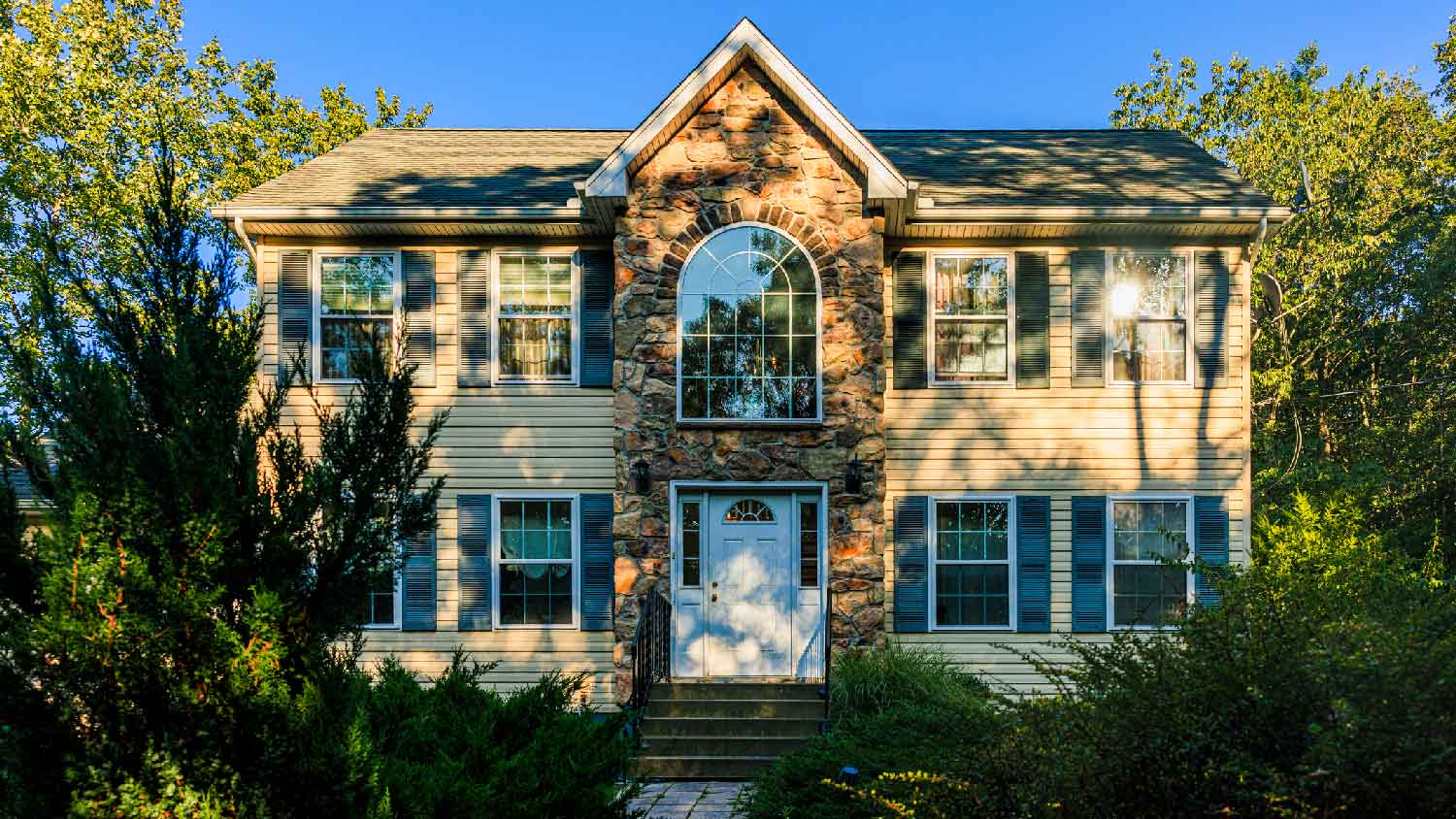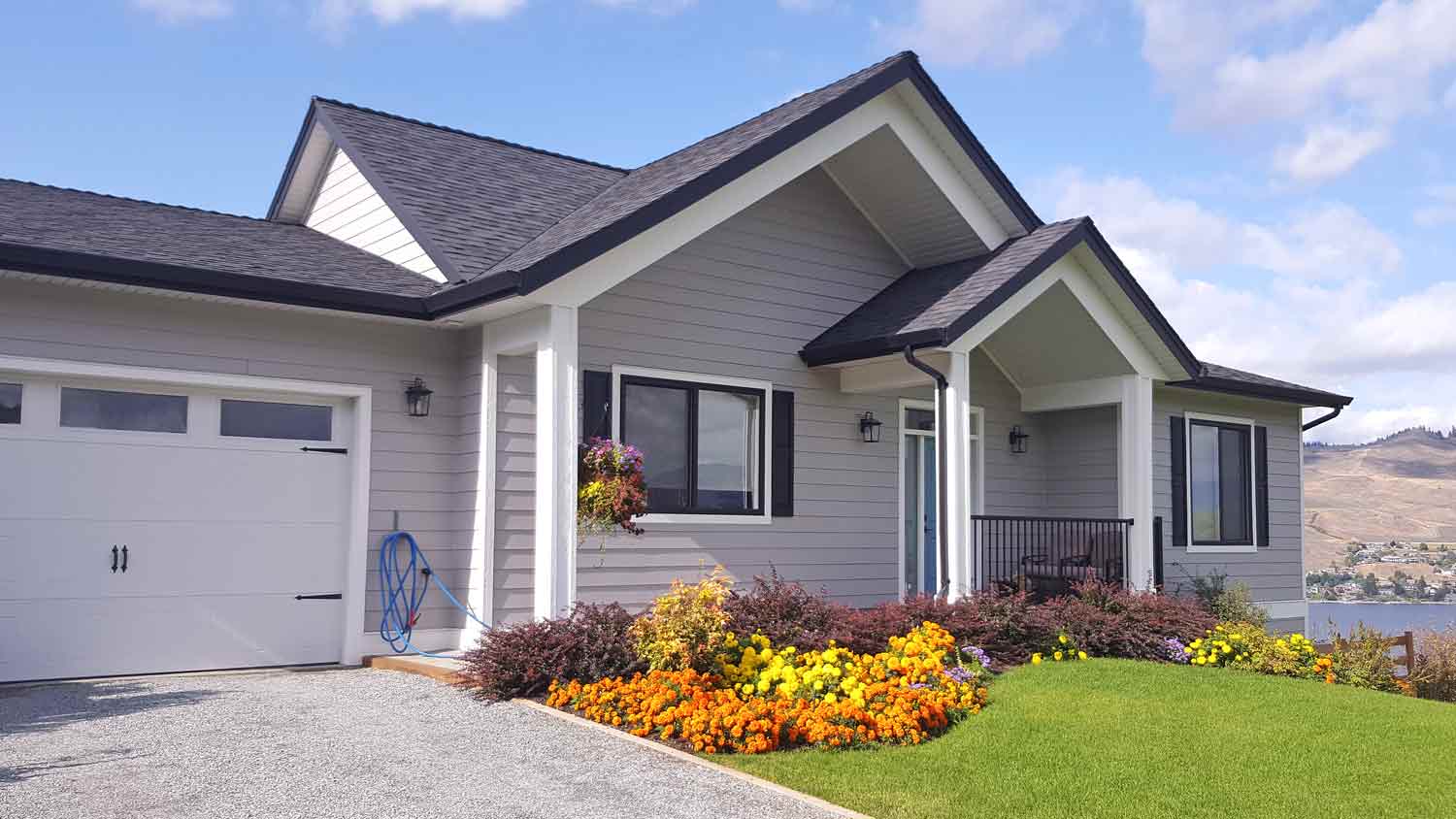
The cost of siding repair varies depending on material, design, and damage. This helpful guide covers the siding repair costs to expect in Columbus, Ohio.
Spring into action to fall in love with your home again


Fall is generally the best time to replace siding, as temperatures are moderate and the risk of rain is low.
Siding contractors are busiest in the fall, so you may pay a bit more for siding replacement due to high demand.
Avoid replacing in the summer or winter, as extreme temperatures can cause warping and cracking.
If you’re selling your home, replacing in the spring might be best to maximize ROI.
Replacing your siding is one of those home improvement projects that you want to time properly. The fall is usually ideal because you’ll avoid harsh weather and temperatures, but there are other factors that affect the best time of year to install siding, and they can influence your project timeline and costs, too.
The best time to replace your siding is in the fall. Temperatures are moderate, which means the building materials won’t expand in high heat or crack during installation in the cold. Spring is also a possibility, but rainfall is highest during this time of year, so the building materials under your old siding have a higher risk of getting wet and sustaining damage.
| Spring | Fall |
|---|---|
| More affordable | More expensive |
| Lower demand | Longer timelines |
| Rain can be an issue | Low risk of rain |
Fall is the best time of year to replace your siding for a few key reasons, but there are some other considerations to make.
The main reason it’s best to replace siding in the fall is the low risk of rain and snow. A home can sit without siding for just a short period of time before precipitation damages the building materials underneath. Replacing in the spring is possible, but there’s a higher risk of rain.
Like any other exterior work, you or the siding contractor you hire will be most comfortable replacing siding in moderate temperatures.
Some types of siding, like vinyl siding, can warp in high summer temperatures, making installation more challenging to do properly. Some materials are also more brittle and likely to crack in colder temperatures, so avoiding winter replacement will often lead to less wasted material and fewer installation issues.
Painting and staining require certain temperature conditions for good adhesion, so wood shakes, fiber cement, and engineered wood that you plan to paint should wait until spring or fall.
You should also consider the reason you’re replacing your siding. If you have damaged siding that’s compromising the materials behind it, aim to replace your siding as soon as possible. It may not be ideal to replace in the summer or winter, but avoiding property damage should be priority number one.
If your goal is to boost home value with new siding before you sell, early spring is the best option. Most sellers aim to hit the market in the spring, and replacing your siding just before you list can maximize return on investment (ROI) and curb appeal to entice potential buyers.
When you install siding can affect your project costs, too, so consider your budget. Fall is the best option overall, but other homeowners know this, too, so siding contractors are busiest this time of year. You may pay a bit more in the fall due to high demand, so spring could help you save some money.

Winter is the worst time of year to replace siding. Not only are you at risk of snowfall that can delay your project or create moisture issues behind your new siding, but some types of siding are more likely to crack or split in cold weather. Freezing temperatures are also uncomfortable to work in, and siding a second story becomes more dangerous if there’s snow or ice to contend with.
The average cost to replace siding is $11,600, and most homeowners pay somewhere between $5,600 and $17,700. You could pay as little as $8,000 to install affordable vinyl siding on a simple 1,000-square-foot home, and prices can rise to $50,000 if you’re opting for a high-end siding material like real stone on a larger, 2,000-square-foot home.
It’s possible to DIY siding replacement, and you’ll save an average of $5,000 by tackling the project yourself. However, while the work is simple in theory, it’s easy to make mistakes that can end up costing you far more in siding repairs and other property damage. Even a small gap that allows water behind your siding can lead to mold growth, wood rot, structural damage, and high water damage repair costs.
Hiring a local siding contractor means avoiding these problems and getting a professional finish that maximizes ROI, curb appeal, and home value. Plus, many siding manufacturers only honor siding warranties if a pro handles the installation, so this is one project where it’s worth paying an expert.
From average costs to expert advice, get all the answers you need to get your job done.

The cost of siding repair varies depending on material, design, and damage. This helpful guide covers the siding repair costs to expect in Columbus, Ohio.

In addition to protecting against extreme Midwest temperatures, new siding in Columbus adds curb appeal. Learn about siding replacement cost in Columbus.

New vinyl siding adds value and curb appeal to homes in Columbus, Ohio. Learn about average vinyl siding installation costs in Columbus, Ohio.

Confused by the differences between cladding vs. siding? You’re not alone. The terms are used interchangeably, but there are some subtle differences.

Not sure you want to go with the standard siding material for your home? Learn about vinyl siding pros and cons to see if there’s a better option.

Lap siding is a common siding style available in various materials. Learn what lap siding is, its pros and cons, and how much it costs.